A sanctuary shaped by centuries of devotion, blending Ottoman grandeur with stories of faith and legacy.
Ready for a quick tour of the Blue Mosque? It’s not just a magnificent structure; it’s a spiritual and historical sanctuary nestled in the heart of Istanbul. Imagine breathtaking domes and intricate tiles that tell tales of an era steeped in reverence and beauty.
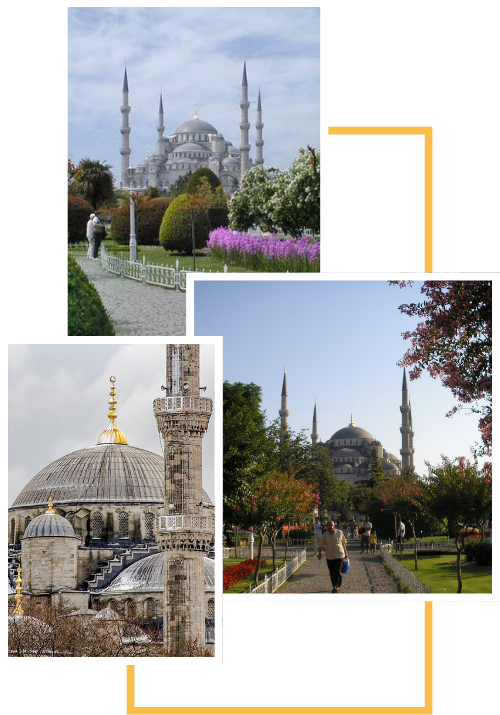

Open daily, except during prayer times.
Modest attire is required, with head coverings for women.
Early morning or late afternoon to avoid the crowds, especially in spring and autumn for a serene experience.
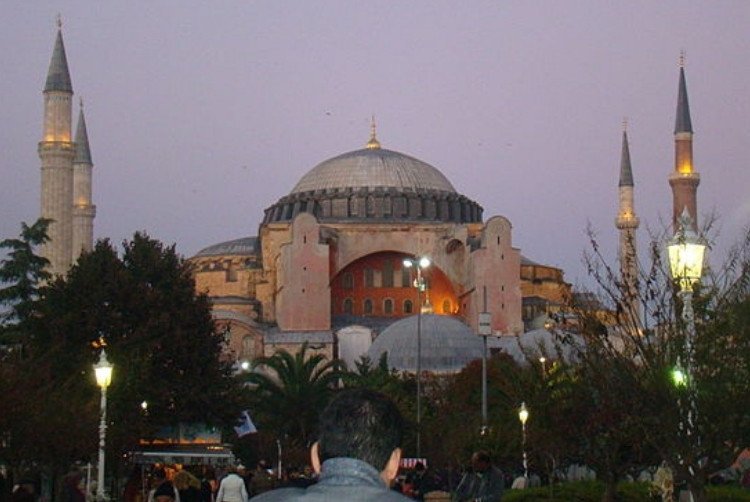
A stunning fusion of Byzantine and Ottoman influences, just a stone’s throw from the mosque.

Step into the opulent world of the Ottoman sultans, mere minutes away from the mosque.
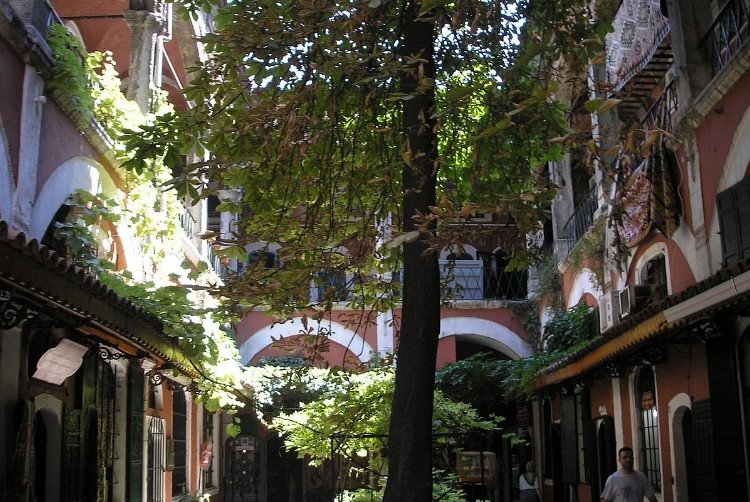
Dive into a labyrinth of shops and stalls, offering everything from spices to textiles, a short walk from the mosque.
6 Minarets Gracing the Sky.
20,000 Hand-painted Iznik Tiles.
Built by Sultan Ahmed I as a symbol of power and piety.

Holds over 10,000 worshippers.
A UNESCO World Heritage Site.
An estimated 4 million visitors each year.





The Blue Mosque, a sanctuary envisioned by Sultan Ahmed I, was born from a desire to leave a lasting spiritual legacy for the Ottoman Empire. Unlike his predecessors who often built grand structures after military victories, Sultan Ahmed sought divine favor through the creation of a temple-like sanctuary that would outshine even the Hagia Sophia. At just 19 years old, he broke ground on this architectural marvel, blending Islamic devotion with Byzantine artistry. The young sultan’s dream was to create a space where heaven and earth meet, a legacy that continues to draw millions to its serene beauty.

One of the most captivating features of the Blue Mosque is its six towering minarets, a symbol of the mosque’s unparalleled status in the Islamic world. This design choice was not without controversy. Traditionally, only the Great Mosque of Mecca, the holiest site in Islam, was adorned with six minarets. The decision to match this sacred number was met with concern, prompting Sultan Ahmed to finance a seventh minaret for the Kaaba, ensuring harmony and respect. This act of reverence, rather than rivalry, highlights the balance of power and piety that defines the Blue Mosque.

The Blue Mosque’s interior is a breathtaking display of over 20,000 hand-painted Iznik tiles, each a masterpiece of Ottoman craftsmanship. These tiles, primarily in shades of blue, give the mosque its name and create a serene, otherworldly atmosphere. The intricate floral and geometric patterns are more than mere decoration; they are a testament to the spiritual and artistic heritage of the Ottoman Empire. Sultan Ahmed I was deeply involved in the selection of these tiles, ensuring they reflected the mosque’s sacred purpose. The result is a sanctuary that is not just seen but felt, with every tile contributing to the mosque’s spiritual ambiance.
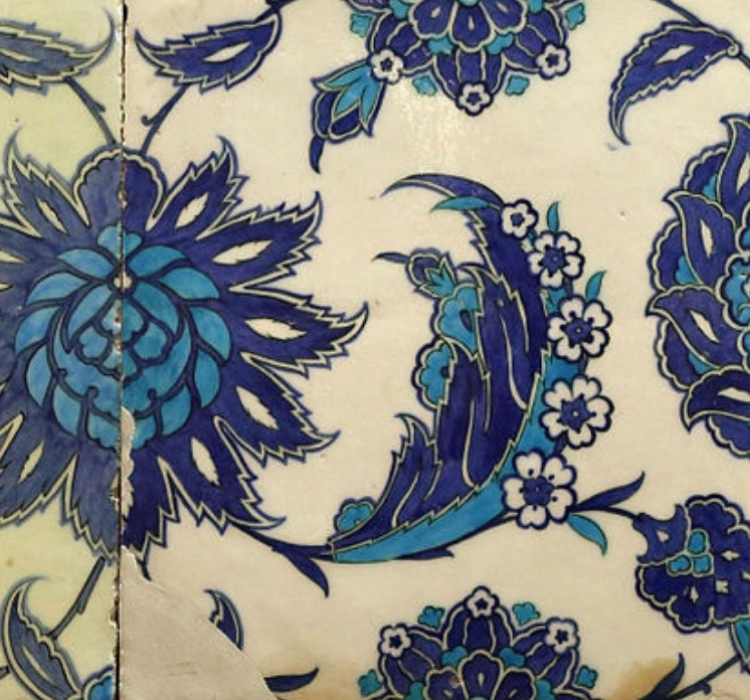
The Blue Mosque’s grandeur is often attributed to its chief architect, Sedefkâr Mehmed Ağa, a student of the legendary Mimar Sinan. However, behind the grandeur lies a tale of dedication and sacrifice. Sedefkâr Mehmed Ağa, aware of the immense pressure to surpass the Hagia Sophia, spent years perfecting the mosque’s design. His commitment to Sultan Ahmed’s vision was so profound that he declined numerous prestigious offers from other regions, focusing solely on creating a sanctuary that would stand the test of time. His work culminated in a structure that, to this day, remains one of the finest examples of classical Ottoman architecture.

Throughout its history, the Blue Mosque has served as more than just a place of worship; it has been a refuge for the faithful, a center of learning, and a symbol of unity. During the Ottoman Empire, the mosque was a hub for scholars and mystics, who would gather to share knowledge and spiritual insights. The mosque’s courtyards were filled with the sounds of recitations and discussions, fostering an environment where faith and intellect thrived side by side. Today, the Blue Mosque continues to welcome millions, regardless of their background, offering a space for reflection, prayer, and connection with the divine.
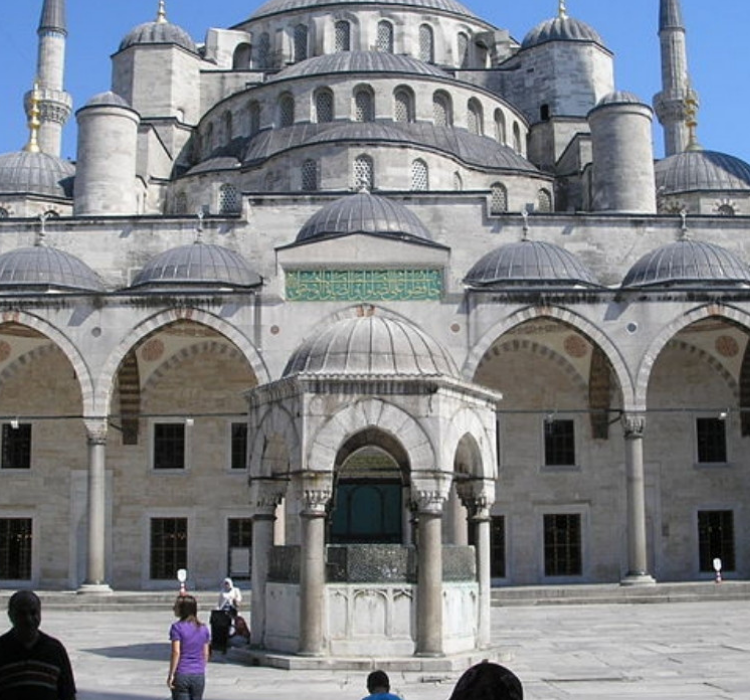
One of the most striking yet often overlooked features of the Blue Mosque is the calligraphy that adorns its grand dome. Written by Seyyid Kasım Gubari, one of the finest calligraphers of his time, these inscriptions are not just decorative but deeply spiritual, containing verses from the Quran that speak of divine mercy and guidance. The calligraphy is positioned in such a way that, as visitors look up, their gaze is naturally drawn towards the heavens, creating a moment of spiritual reflection. This subtle yet powerful design element ensures that the Blue Mosque remains not just a visual marvel but a place where the written word of God guides the faithful.
These stories collectively paint a picture of the Blue Mosque as a living sanctuary, where history, faith, and artistry converge in a space that continues to inspire and elevate the spirit.

Sultan Ahmed I commissions the construction of the Blue Mosque, aiming to create a sanctuary that would rival the grandeur of the Hagia Sophia and symbolize the power and piety of the Ottoman Empire. The young sultan personally oversees the groundbreaking ceremony, marking the beginning of an ambitious project that would blend Islamic spirituality with architectural innovation.

After seven years of intense labor, the Blue Mosque is completed. Sedefkâr Mehmed Ağa, the mosque’s chief architect and a disciple of the legendary Mimar Sinan, ensures that every detail reflects the mosque’s sacred purpose. The mosque’s six minarets, a unique feature at the time, and its vast prayer hall, adorned with thousands of Iznik tiles, make it a marvel of Islamic architecture.
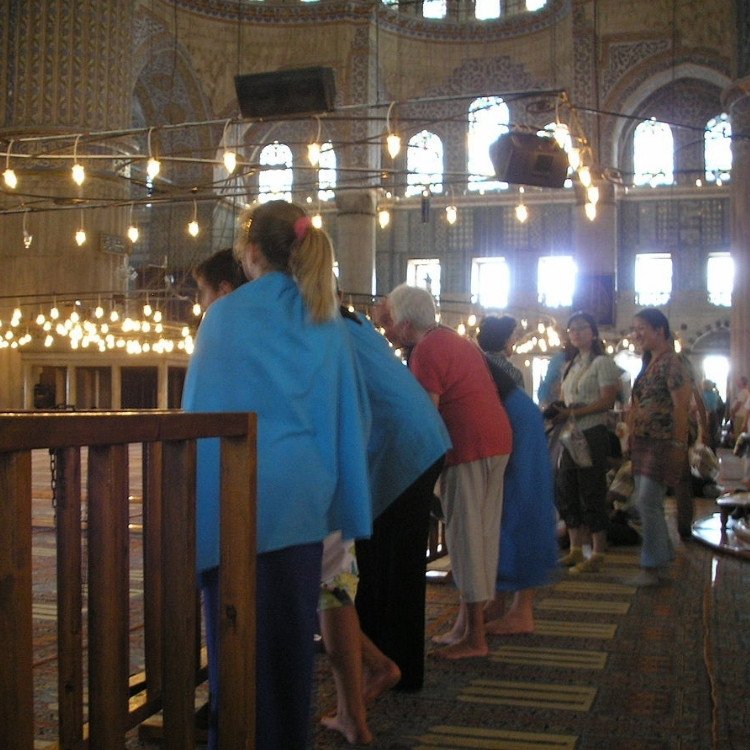
After seven years of intense labor, the Blue Mosque is completed. Sedefkâr Mehmed Ağa, the mosque’s chief architect and a disciple of the legendary Mimar Sinan, ensures that every detail reflects the mosque’s sacred purpose. The mosque’s six minarets, a unique feature at the time, and its vast prayer hall, adorned with thousands of Iznik tiles, make it a marvel of Islamic architecture.

Following its completion, the Blue Mosque quickly becomes a center for both spiritual worship and scholarly pursuits. The mosque complex includes madrasas, a hospital, a primary school, and a market, serving as a vital hub for the community. The mosque’s courtyards echo with the sounds of prayers and intellectual discussions, embodying the Islamic ideal of knowledge and faith going hand in hand.
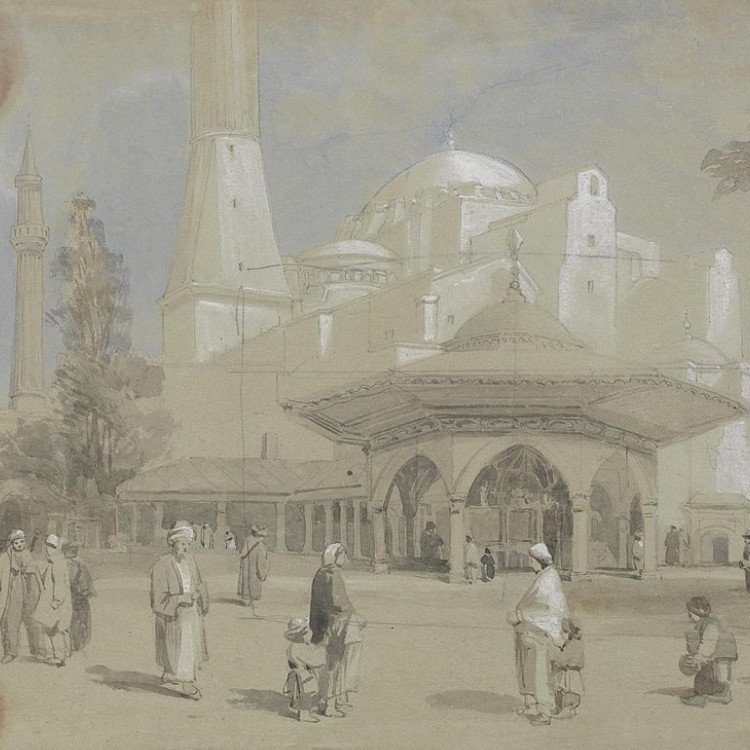
The Blue Mosque’s six minarets spark controversy across the Islamic world, as this feature was previously unique to the Great Mosque of Mecca. To resolve the tension, Sultan Ahmed I finances the construction of a seventh minaret at the Kaaba, reinforcing the sanctity and status of both mosques within the Islamic faith.
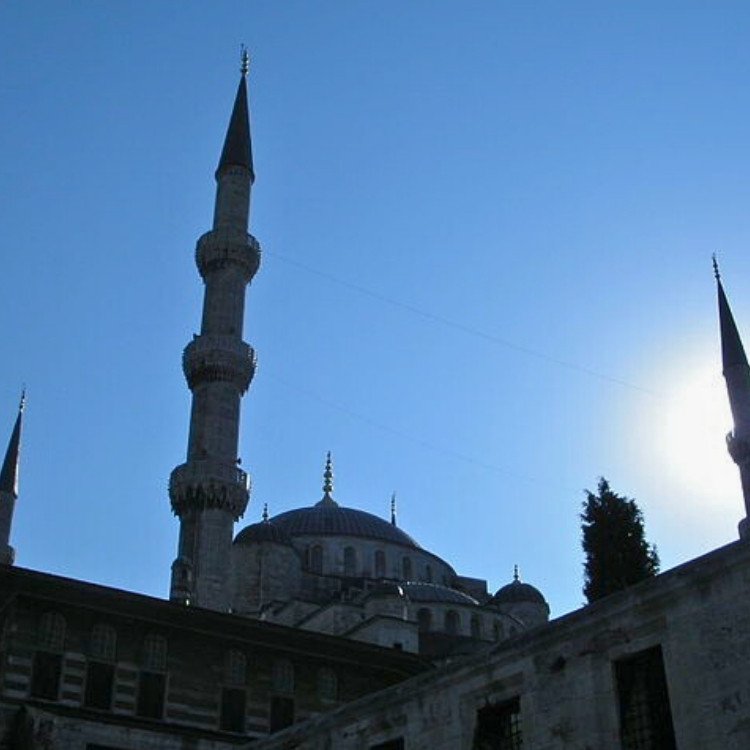
The Blue Mosque’s six minarets spark controversy across the Islamic world, as this feature was previously unique to the Great Mosque of Mecca. To resolve the tension, Sultan Ahmed I finances the construction of a seventh minaret at the Kaaba, reinforcing the sanctity and status of both mosques within the Islamic faith.

As the centuries pass, the Blue Mosque undergoes various restorations to maintain its structural integrity and aesthetic beauty. The mosque’s design influences Islamic architecture across the Ottoman Empire, with its harmonious blend of Byzantine and Islamic elements serving as a model for future mosques.

During the reign of Sultan Abdülmecid I, the Blue Mosque undergoes its first significant restoration. The work focuses on preserving the mosque’s intricate tilework and structural elements, ensuring that the sanctuary continues to inspire awe in worshippers and visitors alike.
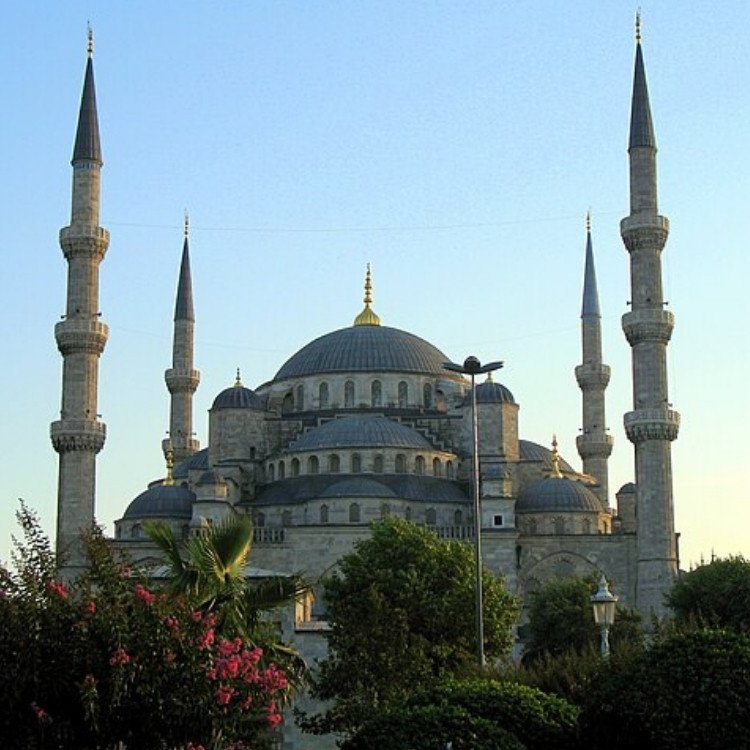
During the reign of Sultan Abdülmecid I, the Blue Mosque undergoes its first significant restoration. The work focuses on preserving the mosque’s intricate tilework and structural elements, ensuring that the sanctuary continues to inspire awe in worshippers and visitors alike.

In the wake of the Republic of Turkey’s founding, many religious buildings, including the Blue Mosque, are repurposed as museums. However, the mosque retains its role as a place of worship, symbolizing the enduring spiritual significance of the site amidst the nation’s modernization efforts.

The historic areas of Istanbul, including the Blue Mosque, are recognized as UNESCO World Heritage Sites. This designation highlights the mosque’s cultural and architectural significance, securing its place as a global icon of Islamic heritage.

The historic areas of Istanbul, including the Blue Mosque, are recognized as UNESCO World Heritage Sites. This designation highlights the mosque’s cultural and architectural significance, securing its place as a global icon of Islamic heritage.

Entering the new millennium, the Blue Mosque undergoes further restorations, ensuring that its majestic domes, minarets, and tilework remain intact for future generations. Despite its age, the mosque continues to function as both a sanctuary and a key tourist attraction, drawing millions who seek to experience its serene beauty and profound spiritual atmosphere.


In the early 17th century, Sultan Ahmed I, deeply inspired by the desire to create a sanctuary that would stand as a testament to both his faith and the might of the Ottoman Empire, commissioned the construction of what would become known as the Blue Mosque. This vision was not just about building another mosque but creating a space that would embody the spiritual aspirations of a nation. The site chosen, facing the Hagia Sophia and overlooking the Bosphorus, was both symbolic and strategic, positioning the Blue Mosque as a spiritual heart of the empire and a bridge between the Islamic and Byzantine worlds.
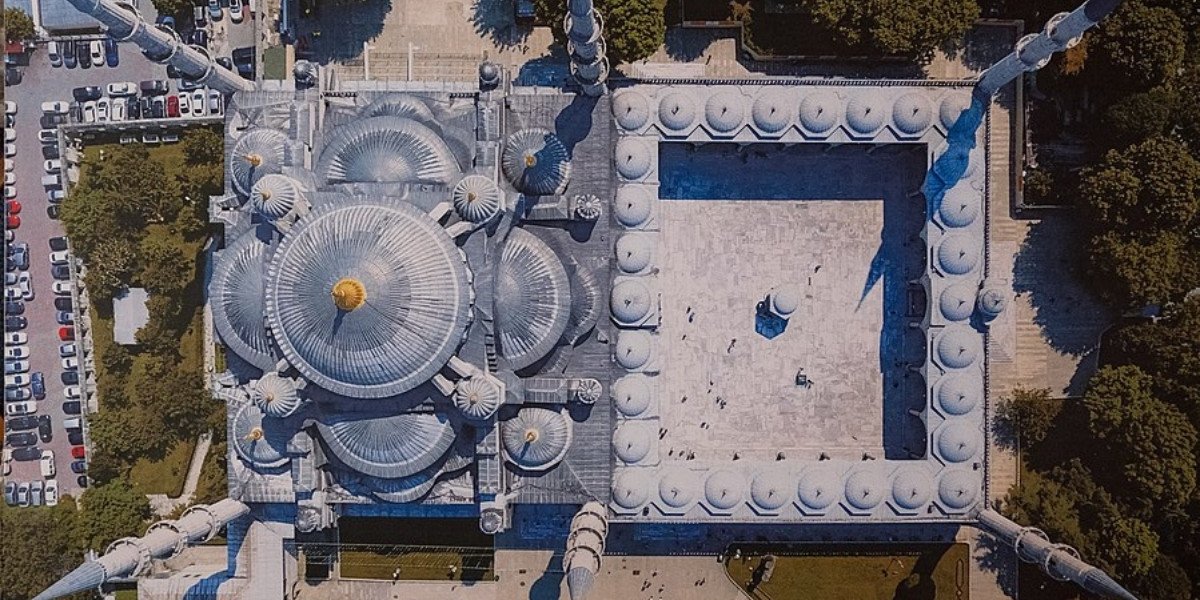
The construction of the Blue Mosque, led by the master architect Sedefkâr Mehmed Ağa, presented numerous architectural challenges. The design was ambitious, integrating traditional Islamic elements with influences from Byzantine architecture. The mosque’s six minarets were particularly controversial, as they matched the number of minarets at the Great Mosque of Mecca, leading to a diplomatic resolution where a seventh minaret was added to the Kaaba. Despite these challenges, the mosque’s construction was completed in just seven years, a testament to the dedication and skill of the craftsmen involved.
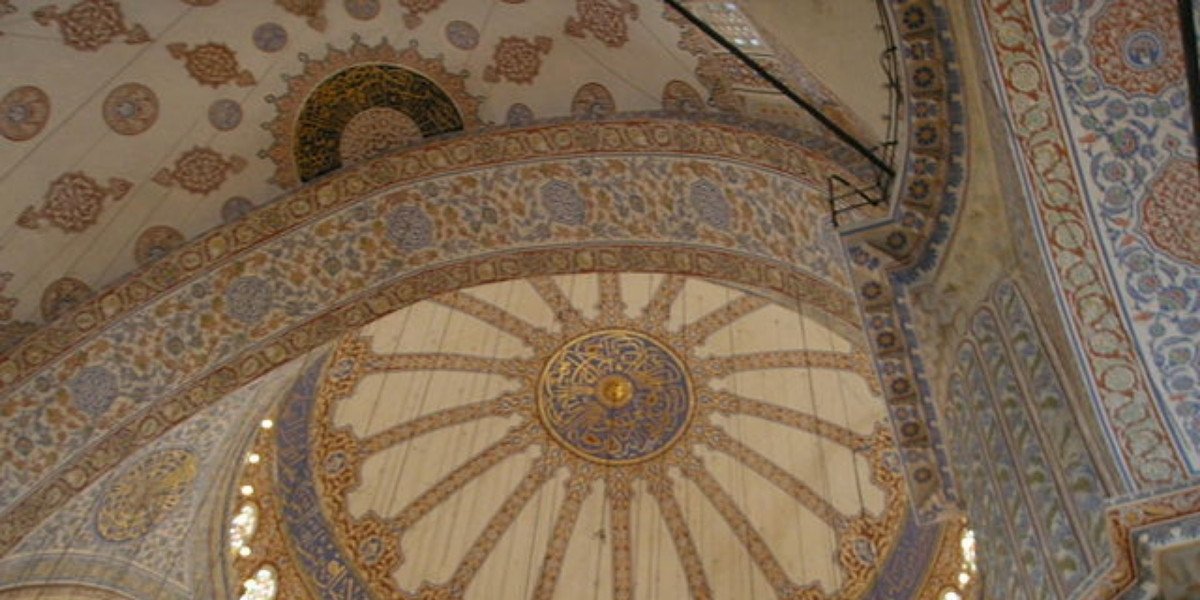
The interior of the Blue Mosque is renowned for its overwhelming beauty, largely attributed to the more than 20,000 hand-painted Iznik tiles that adorn its walls. These tiles, predominantly in shades of blue, create a serene and otherworldly atmosphere, giving the mosque its name. Each tile is a work of art, featuring intricate floral and geometric patterns that reflect both the artistic and spiritual heritage of the Ottoman Empire. The mosque’s grand dome, adorned with verses from the Quran, further enhances the sense of spiritual elevation that visitors experience as they enter this sacred space.
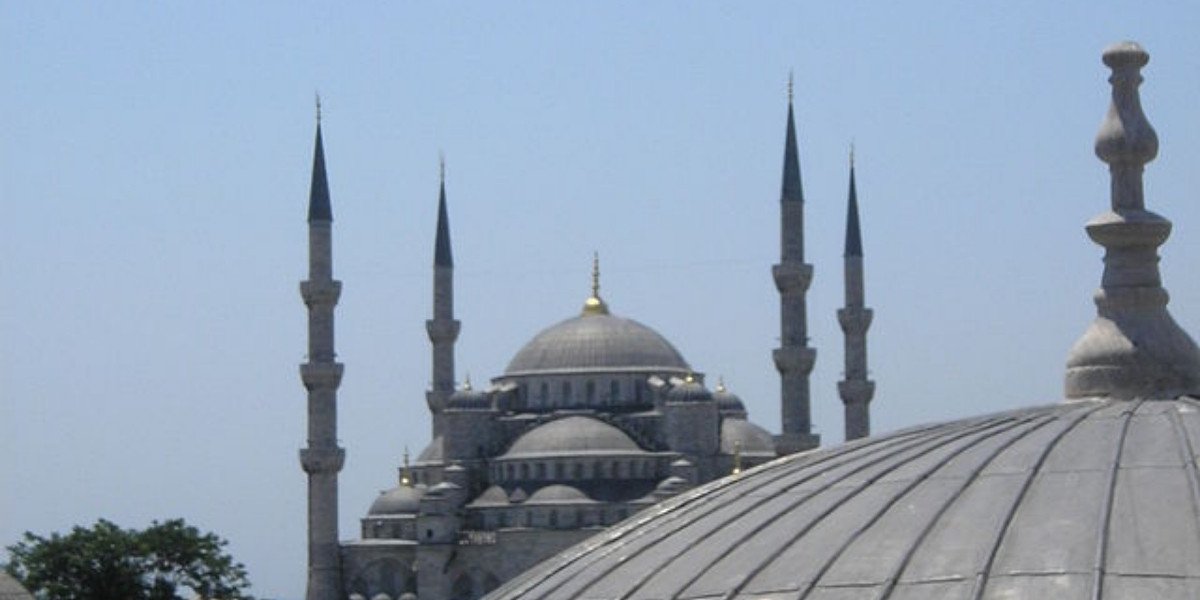
From its inception, the Blue Mosque was more than just a place of worship; it was a vital center of community life. The mosque complex included madrasas, a hospital, a public kitchen, and a market, making it a hub of both spiritual and social activity. The mosque’s courtyards were filled with the sounds of prayer and scholarly debate, embodying the Islamic ideal of a harmonious community where faith, knowledge, and charity were intertwined. This role as a community center has continued throughout the centuries, with the mosque remaining a focal point for both locals and visitors.
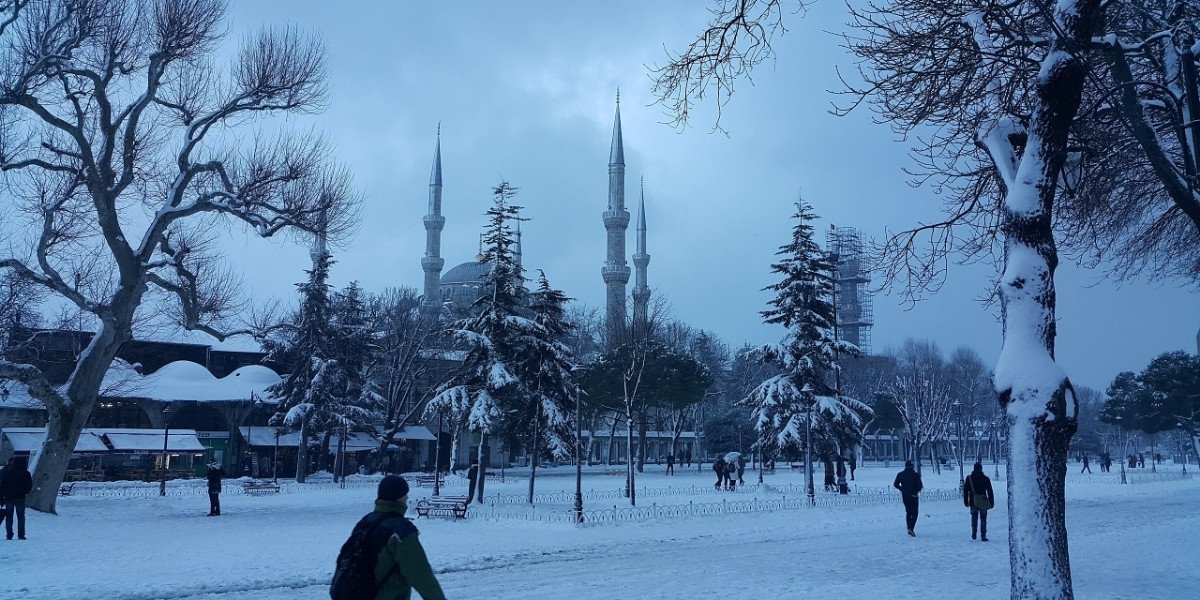
Over the centuries, the Blue Mosque has undergone several restorations to preserve its architectural integrity and aesthetic beauty. These efforts, spanning from the Ottoman period through to the modern Republic of Turkey, have ensured that the mosque remains a vibrant and functioning place of worship. In the 19th century, under Sultan Abdülmecid I, the mosque received one of its first major restorations, focusing on the preservation of its intricate tile work and structural stability. More recently, efforts have been made to maintain the mosque’s splendor while adapting it to the needs of contemporary worshippers and visitors.
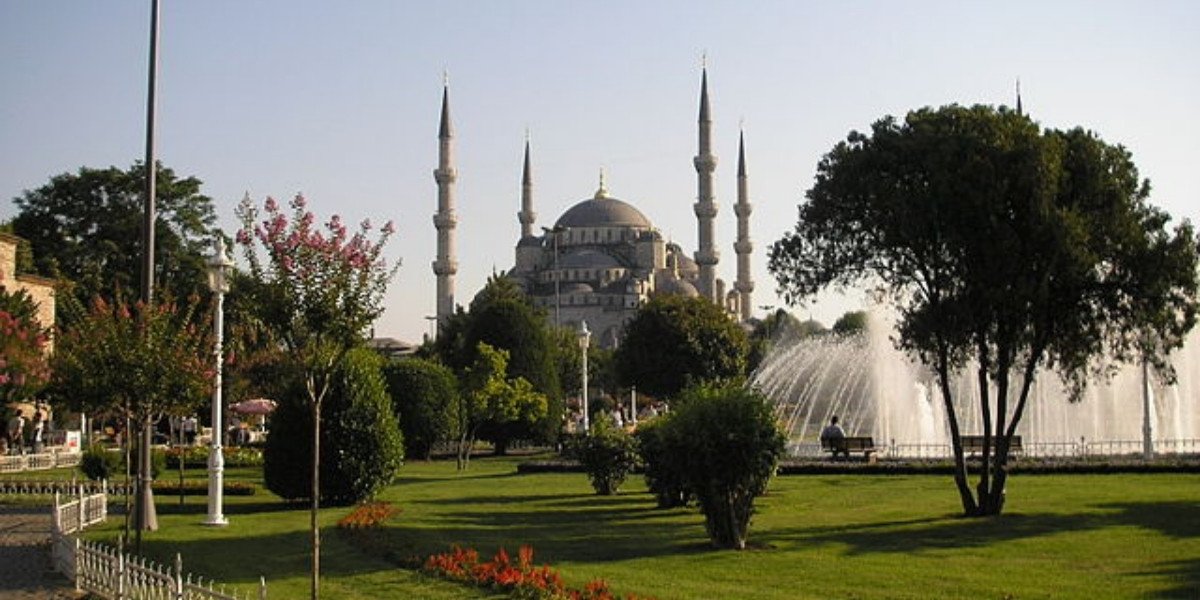
The Blue Mosque’s influence extends far beyond its physical walls. As one of the most significant examples of classical Ottoman architecture, it has inspired countless other mosques and religious buildings across the Islamic world. Its unique blend of artistic beauty, spiritual significance, and community function continues to draw millions of visitors each year, making it one of Istanbul’s most iconic landmarks. The mosque’s legacy is not only one of architectural brilliance but also of enduring faith, standing as a symbol of the spiritual and cultural heritage of the Ottoman Empire.
This history of the Blue Mosque, like that of many great sanctuaries, is one of vision, devotion, and a deep connection between faith and community. It is a place where the past and present meet, offering a space for reflection, worship, and inspiration for all who enter its sacred halls.
Contact Us
Copyright © 2025 Temples.org. All rights reserved.